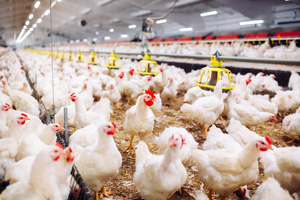 Ventilation can sometimes challenge even the best poultry growers. However, it is necessary to maintain both air quality and litter (a mixture of poultry excreta, spilled feed, feathers, and material used as bedding) conditions. Dwyer offers the latest sensor and control technology to help maintain proper environments. By choosing reliable, repeatable, and sustainable solutions, it’s possible to prevent and plan for potential unwanted and detrimental factors that can affect bird health and growth. Moisture (relative humidity / RH), carbon dioxide (CO2), and carbon monoxide (CO) are three major issues most growers will face in the broiler house coming out of the winter season and daily practices throughout the grow process.
Ventilation can sometimes challenge even the best poultry growers. However, it is necessary to maintain both air quality and litter (a mixture of poultry excreta, spilled feed, feathers, and material used as bedding) conditions. Dwyer offers the latest sensor and control technology to help maintain proper environments. By choosing reliable, repeatable, and sustainable solutions, it’s possible to prevent and plan for potential unwanted and detrimental factors that can affect bird health and growth. Moisture (relative humidity / RH), carbon dioxide (CO2), and carbon monoxide (CO) are three major issues most growers will face in the broiler house coming out of the winter season and daily practices throughout the grow process.
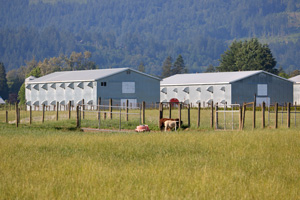 A well developed ventilation program will help prevent moisture issues if growers follow recommended guidelines. Implementing the right sensors will allow temperature, humidity, air flow, and pressure to be monitored for optimal air quality conditions. However, manual on-off ventilation systems likely cannot respond efficiently to real-time current air quality status conditions, and fan run times may need to be increased above the levels that are needed strictly for moisture removal. Automating your process and increasing ventilation when needed will help to maintain adequate health and welfare conditions for both you and the birds.
A well developed ventilation program will help prevent moisture issues if growers follow recommended guidelines. Implementing the right sensors will allow temperature, humidity, air flow, and pressure to be monitored for optimal air quality conditions. However, manual on-off ventilation systems likely cannot respond efficiently to real-time current air quality status conditions, and fan run times may need to be increased above the levels that are needed strictly for moisture removal. Automating your process and increasing ventilation when needed will help to maintain adequate health and welfare conditions for both you and the birds.
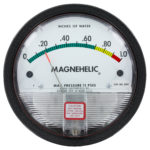
One of the most efficient ways to monitor air flow is by use of differential pressure to maintain a positive pressure. Dwyer offers local indication pressure monitors, switches, and transmitters for ventilation control, including the Series 2000 Magnehelic® gage, Series A3000 Photohelic® switch/gage, Series MSX Magnesense® transmitter, and Series DH3 Digihelic® controller.
In-house humidity and moisture levels are constant challenges to growers during the winter season. Several sources are at work creating moisture and high humidity in the chicken house, including outside weather conditions, the birds, the drinkers, and the heating system. During winter months, outside temperatures are much lower than during summer, and humidity levels are often quite high, making it more difficult to dry out the house. The exception to this are poultry houses located in humid climates, where humidity levels are high year round.
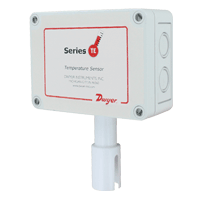
Dwyer offers several indoor and outdoor humidity/temperature solutions, including the Series RHP transmitter, TE sensor, and Series O-4 sensor.
Other factors like indoor air quality play a large part in healthy poultry houses. Carbon dioxide (CO2), carbon monoxide (CO), humidity, and dust are critical factors that growers must adequately manage during the season to ensure bird health and comfort. Integrators (who are often owners of flocks, hatcheries, mills, etc.) typically provide growers with ventilation guidelines that, when followed, will help maintain CO2, CO, humidity, and dust at acceptable levels.
The oxygen (O2) content of fresh air is approximately 20 percent and should be at or very near this level in the chicken house at all times. Levels less than this for long periods of time can make birds more susceptible to developing ascites (water belly). High CO2 levels (>3,000 ppm) in the house for extended periods also can lead to ascites, as well as decreased weight gain, reduced feed and water intake, increased incidence of dehydration, and reduced bird activity levels. Proactively monitoring these conditions will mean a more efficient growth cycle and healthier birds.
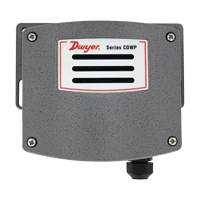
Dwyer IAQ solutions for poultry houses include the Series CDT CO2/temperature transmitter, Series CDWP CO2 transmitter, Series CDTR CO2/RH/temperature transmitter, and Series GSTC CO/NO2 gas transmitter.
If you have any questions about selecting products for your application, the Dwyer Applications Engineers are available to assist by phone at (219) 879-8868 x6402, or by email at tech@dwyermail.com.
To learn about how Dwyer products are used in other agricultural applications, please visit our website: https://info.dwyer-inst.com/2023-agriculture
